FACIN, a Double-Edged Sword of the Emerging Periodontal Pathogen Filifactor alocis: A Metabolic Enzyme Moonlighting as a Complement Inhibitor
- PMID: 27638863
- PMCID: PMC5101141
- DOI: 10.4049/jimmunol.1600739
FACIN, a Double-Edged Sword of the Emerging Periodontal Pathogen Filifactor alocis: A Metabolic Enzyme Moonlighting as a Complement Inhibitor
Abstract
Periodontal disease is one of the most common inflammatory infectious diseases worldwide and it is associated with other syndromes, such as cardiovascular disease or rheumatoid arthritis. Recent advances in sequencing allowed for identification of novel periodontopathogens such as Gram-positive Filifactor alocis, but its virulence mechanisms remain largely unknown. We confirmed that F. alocis is a prevalent species in periodontitis patients, and we also observed strong correlation of this bacterium with clinical parameters, highlighting its role in the pathogenesis of the disease. Further, we found that preincubation of human serum with F. alocis resulted in abolished bactericidal activity and that F. alocis was surviving readily in full blood. We demonstrated that one of the key contributors to F. alocis complement resistance is a unique protein, FACIN (F. alocis complement inhibitor), which binds to C3, resulting in suppression of all complement pathways. Interestingly, FACIN is a nonclassical cell surface protein, a cytosolic enzyme acetylornithine transaminase, for which we now identified a moonlighting function. FACIN binds to C3 alone, but more importantly it also captures activated complement factor 3 within the complex with factor B, thereby locking in the convertase in an inactive state. Because of the indispensable role of alternative pathway convertase in amplifying complement cascades, its inhibition by FACIN results in a very potent downregulation of activated complement factor 3 opsonization on the pathogen surface, accompanied by reduction of downstream C5 cleavage.
Copyright © 2016 by The American Association of Immunologists, Inc.
Conflict of interest statement
The authors have no financial conflict of interest.
Figures
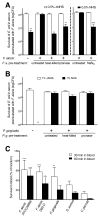
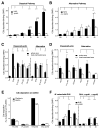
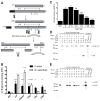
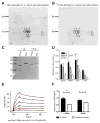
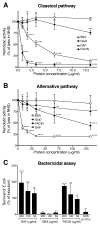
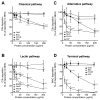
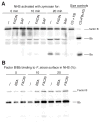
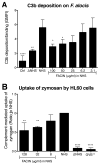
Similar articles
-
Characterization and immunostimulatory activity of extracellular vesicles from Filifactor alocis.Mol Oral Microbiol. 2020 Jan;35(1):1-9. doi: 10.1111/omi.12272. Epub 2019 Dec 3. Mol Oral Microbiol. 2020. PMID: 31675472
-
Filifactor alocis--a new emerging periodontal pathogen.Microbes Infect. 2015 Jul;17(7):517-30. doi: 10.1016/j.micinf.2015.03.011. Epub 2015 Apr 2. Microbes Infect. 2015. PMID: 25841800 Free PMC article.
-
[Filifactor alocis and its role in the etiology of chronic periodontitis].Stomatologiia (Mosk). 2020;99(3):78-82. doi: 10.17116/stomat20209903178. Stomatologiia (Mosk). 2020. PMID: 32608955 Russian.
-
Filifactor alocis: The Newly Discovered Kid on the Block with Special Talents.J Dent Res. 2014 Aug;93(8):725-32. doi: 10.1177/0022034514538283. Epub 2014 Jun 4. J Dent Res. 2014. PMID: 24898946 Free PMC article. Review.
-
Pathways of complement activation in membranoproliferative glomerulonephritis and allograft rejection.Transplant Proc. 1977 Mar;9(1):729-39. Transplant Proc. 1977. PMID: 325806 Review.
Cited by
-
Polymicrobial communities in periodontal disease: Their quasi-organismal nature and dialogue with the host.Periodontol 2000. 2021 Jun;86(1):210-230. doi: 10.1111/prd.12371. Epub 2021 Mar 10. Periodontol 2000. 2021. PMID: 33690950 Free PMC article. Review.
-
Filifactor alocis: Recent Insights and Advances.J Dent Res. 2021 Jul;100(8):790-797. doi: 10.1177/00220345211000656. Epub 2021 Mar 14. J Dent Res. 2021. PMID: 33719654 Free PMC article.
-
Hydrogel containing minocycline and zinc oxide-loaded serum albumin nanopartical for periodontitis application: preparation, characterization and evaluation.Drug Deliv. 2019 Dec;26(1):179-187. doi: 10.1080/10717544.2019.1571121. Drug Deliv. 2019. PMID: 30822158 Free PMC article.
-
The impact of Filifactor alocis on the severity of periodontitis among diabetic and non-diabetic patients: a narrative review.Front Dent Med. 2024 May 22;5:1408839. doi: 10.3389/fdmed.2024.1408839. eCollection 2024. Front Dent Med. 2024. PMID: 39917682 Free PMC article. Review.
-
Aggregatibacter actinomycetemcomitans and Filifactor alocis: Two exotoxin-producing oral pathogens.Front Oral Health. 2022 Aug 15;3:981343. doi: 10.3389/froh.2022.981343. eCollection 2022. Front Oral Health. 2022. PMID: 36046121 Free PMC article. Review.
References
-
- Suvan J, D’Aiuto F, Moles DR, Petrie A, Donos N. Association between overweight/obesity and periodontitis in adults. A systematic review. Obes Rev. 12:e381–404. - PubMed
-
- Tonetti MS. Periodontitis and risk for atherosclerosis: an update on intervention trials. J Clin Periodontol. 2009;36(Suppl 10):15–19. - PubMed
Publication types
MeSH terms
Substances
Grants and funding
LinkOut - more resources
Full Text Sources
Other Literature Sources
Molecular Biology Databases
Miscellaneous

